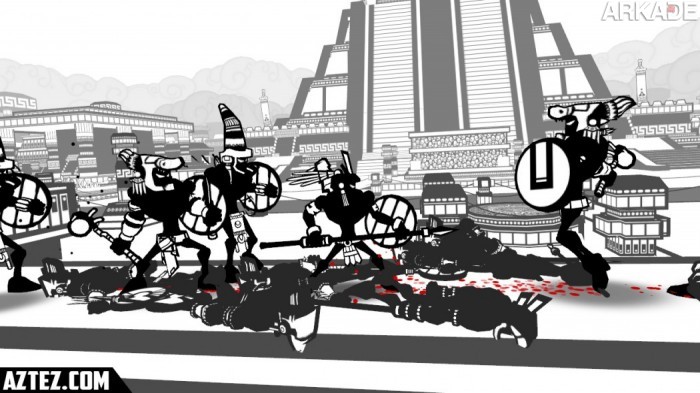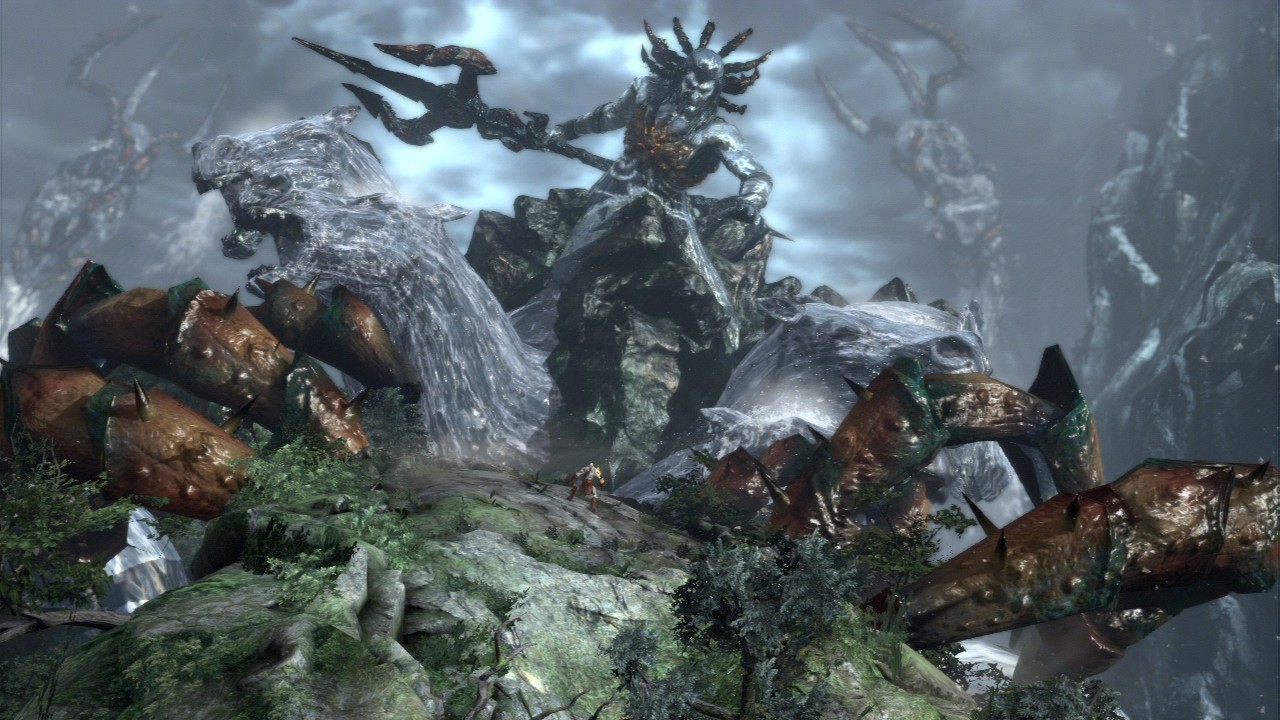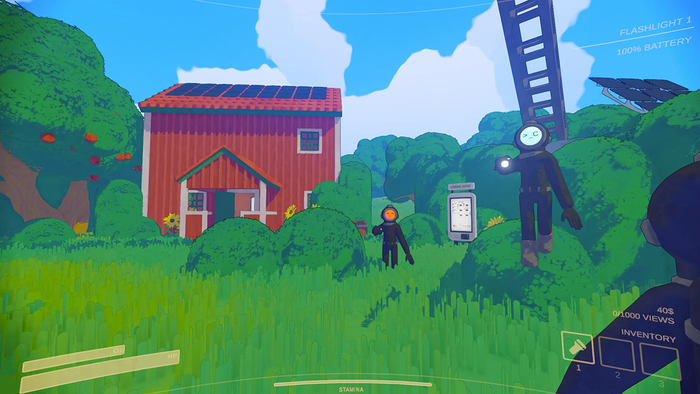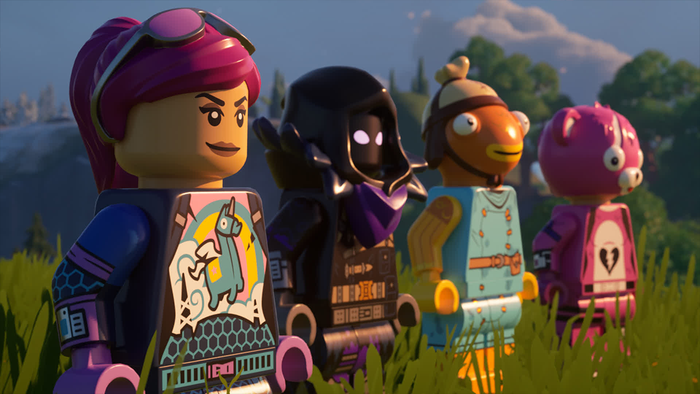
Featured Blog | This community-written post highlights the best of what the game industry has to offer. Read more like it on the Game Developer Blogs.
This article goes in depth on how levels are designed for games that include melee combat systems and how the level design can help promote player's engagement with the combat system.

Introduction
This is the first article in a three part series about how Level design, Enemy design, and Enemy AI can make melee combat systems more engaging. These articles discuss several major titles and feature input from leading combat designers.
The professionals I interviewed and their main titles are: Alex Sulman, who was involved with combat design on Heavenly Sword, God of War 3, and God of War Ascension; Rahni Tucker, the combat designer for DmC: Devil May Cry; Anthony Newman, the melee combat designer on The Last of Us; Ben Ruiz, a combat design consultant and designer of Aztez; Daniel Nordlander, who worked on the combat of Dead Island 2; Doug Walker, a systems designer on multiple Killzone games and responsible for designing the brutal melee system; Berendine Venemans, a designer on Killzone: Shadowfall and Watchdogs; and Tom Bird who worked as a programmer on the Overlord series.
In this article I will go into depth about level design for melee combat systems. The next article will be about enemy design and enemy AI (read it here). The last article will compare which of these has the most impact on the combat and how to possibly improve the contribution of the other (read it here).
Level Design
Level design refers to the space in which the combat takes place. This includes the shape of the area, placement of objects and other gameplay elements in the area. It also partially includes which enemies are encountered, because these alter the mode of interaction and experience of the space. I will first explain the effects of the combat space, followed by gameplay elements, enemy placement, boss fights, and games which include ranged combat.
The Combat Space
Games like DmC usually have combat areas that are empty and flat with walls (or some other border) which indicate the edge of the available gameplay space. This emptiness allows players to make full use of the combat system without the level’s geometry getting in the way.
“For a melee based game, if you are trying a big combo and [get interrupted as] you bump into a waist-height wall, it’s really frustrating.” – Rahni Tucker

This also sets a clear boundary for the interactions; the player knows they do not have to consider any elements of the game outside of the area until combat is over. The size of these areas is also designed to give the player enough room for combat. Games in which the player can quickly traverse large distances tend to have larger arenas to give players enough room during combat, compared to games in which the player is less mobile. Some games occasionally do have collision objects within the combat area or small height differences. These usually have very little impact on the combat in the area. DmC’s examples provide a good illustration of the design elements that can be found in many other combat-focussed titles.
In general, fighting areas (as opposed to areas for traversal gameplay) are open spaces instead of tailor-made areas for the fight to take place in. Most level designers on melee combat games use design guidelines to set up their combat areas, without designing them for a specific fight, to make sure the combat and animations work without requiring bespoke, and therefore more expensive, interactions. Anthony Newman explains that in The Last of Us they had “guidelines that our artists and designers try to adhere to” to facilitate the combat encounters in each area. They used a general set of rules for designing these spaces to make them work for the combat system.
Combat area design guidelines were also used in God of War:
“We would usually roughly know where we were going to place a fight so we would try to build that location to complement any fight that you end up putting in there.” – Alex Sulman
God of War also had ranged combat: this meant adding a separated space in the combat area allowed for projectile enemies. In God of War 3 they were limited on the amount of undulation they could have in the environment because of context sensitive animations (e.g. ripping an enemy’s head off). This approach of using general guidelines was common among the designers that I spoke to.
In a few games combat areas do get custom adaptations, depending on the enemies present in that area.
In Dead Island 2 “one big focus was on integrating [the enemies] into the level” – Daniel Nordlander.
They did this by often placing environmental features in the level if specific enemies would be there, such as an elevated area for an enemy with a ranged attack. In DmC they retroactively changed some areas after it was decided which enemies appeared there.
“When designing a room that is going to [be] showing a specific enemy off there should be space for that enemy to do its best thing or introduces the player to a new way of fighting that guy.” – Rahni Tucker
They also added set-pieces to add variation to similar encounters and making the fight feel fresh to the player. Doing this is something which has to be decided on early in the project, otherwise it will result in more work to change levels retroactively.
The level design also has a lot of impact on the camera design. Tucker explains that “the camera is a big one, because in a third person game you have to handle what the camera does when pushed up against the wall”. You want to avoid placing objects which might get in the way of the camera. This was solved in God of War 3 by creating fixed paths through the level for the camera’s movement. This camera path was also part of the responsibility of the level designer to ensure that the player can see what is going on during the fight.
The combat areas generally have an entrance and an exit. The path to the exit always leads the player past the enemies “to encourage you to go across the space [and] force you to encounter the enemies.” (Sulman). In addition to this most melee games use some kind of method to block off the exit until the player has defeated all enemies. Examples of this are magical barriers as seen in DmC or environmental objects blocking off the exit and breaking apart after all enemies have been defeated.
Places where the player can rush ahead often allow the enemies to follow the player, enemies in Ninja Gaiden 2 can follow the player past most types obstacles, or have a method to pull the player back into combat, enemies can shoot the player down in Prince of Persia and Assassin’s Creed when they try to climb away. Although the intention of the latter examples are less clear to the player, the intention of keeping the players involved in combat is clear. Where games do not do this, it is often possible for the player to exploit the AI code to their own benefit, for example by exploiting their own superior navigation skills to use hit-and-run tactics, or by running outside of the AI’s patrol area. Although they are not melee combat games, this problem can be observed in titles such as Mass Effect 2 and Destiny.
 Good enemy placement is important to encourage players to still engage in combat in open world games such as Batman: AC, where the combat areas are usually less defined than linear games, i.e. they frequently do not have clear entry and exit points. Places where the player can encounter enemies are usually open to give the player enough space to approach combat in multiple ways, and the exits of a combat area do not get blocked off in the open world environment. The added benefit of this is that players can flee from fights that they did not intend to begin. Mechanics such as the grappling hook in Batman: AC further facilitate this fleeing, but often also reset the encounter which can lead to frustration. Enemies often have an elaborate chasing AI in order to keep the player engaged in combat, which can balance out players exploiting the advantages of hit-and-run tactics. Players should be encouraged to fight the enemies without forcing them to commit to an encounter they engaged unintentionally.
Good enemy placement is important to encourage players to still engage in combat in open world games such as Batman: AC, where the combat areas are usually less defined than linear games, i.e. they frequently do not have clear entry and exit points. Places where the player can encounter enemies are usually open to give the player enough space to approach combat in multiple ways, and the exits of a combat area do not get blocked off in the open world environment. The added benefit of this is that players can flee from fights that they did not intend to begin. Mechanics such as the grappling hook in Batman: AC further facilitate this fleeing, but often also reset the encounter which can lead to frustration. Enemies often have an elaborate chasing AI in order to keep the player engaged in combat, which can balance out players exploiting the advantages of hit-and-run tactics. Players should be encouraged to fight the enemies without forcing them to commit to an encounter they engaged unintentionally.
A game with 2D space is more limited in level design than a game in 3D space. As a result there is less room for other elements the player can interact with during the fight. In Aztez, combat areas have a specific width with walls on either sides. Some games, like Guacamelee, also include platforming; however, this generally is not useful during combat. To include enemies on other platforms in the fight, the player would have to be able to move there quickly and easily during combat.
Gameplay Elements in the Environment
If there is nothing in the level other than the enemies, the environment can feel like a film set instead of a believable space.
“One of the big complaints about God of War was that everything always felt like a set. Other than the boss fights nothing would really interact with the environment.” – Alex Sulman.
To solve this, the God of War team put more destructible props in the environment. This makes the environment feel more interactive though does not change much to the combat itself.
Many other melee combat games also have props in the environment which can be destroyed, such as vases. to add gameplay rewards to these interactions, these destructible elements usually drop items or regenerate health, although it is debatable whether this reward mechanic fits with the narrative setting: a hero who is dying may spend a great deal of time smashing apparently inconsequential items to survive. Although it´s an unpopular term in games discussion, these elements of ludonarrative dissonance can be considered when designing the mechanics around destructible props.
Some games also have other gameplay elements in the combat arena, i.e. puzzles and set pieces. These are generally intended to be solved or used after the combat to progress further through the level: trying to solve puzzles while in combat can quickly become frustrating for players if the puzzle is not integrated into the combat mechanic.
Set pieces are generally intended to be used to defeat enemies during the combat encounter. This can also help make the combat part of a puzzle instead of distracting from it. Tucker gave an example in which an engraving in the floor would have to be filled with blood by slaying enemies.
“The combat [can be] part of an objective, part of the progression, rather than something in the way of progression.” – Rahni Tucker.
By combining a simple extra set-piece mechanic with her combat, Tucker adds variety to the player’s experience without feeling too forced or significantly increasing the workload for development.
Enemy placement
Enemy placement is an important factor for the pacing of the game. The way waves and consecutive encounters are paced can be used to gradually increase the challenge for players, introduce new enemies at specific points, and build up to an escalation.
Enemy placement is important for the difficulty cuyrve of the game and keeping encounters varied, and occasionally you can let the player fight through countless enemies without challenge.
“We do that occasionally because it’s fun, but then we would put some fodder with a much bigger guy and encourage you to change the way you fight or to re-engage in a different way.” – Alex Sulman.
Outside these moments designers try to keep challenging the player with different combinations of enemies or new enemies, forcing the player to pay attention to what they are doing and occasionally encouraging the player to change the way they fight or to re-engage in a different way.
The introduction of new enemies is an important part in the pacing of the game. Each enemy type should have an introduction to sell that enemy and clearly explain their difference to the previous opponents. These introductions need to be paced to match the level design to ensure that there is sufficient space for this learning encounter. If the game is aiming for a mainstream audience players desire the opportunity to learn how to defeat a new enemy that is outside of an already complex combat situation. The level design, and all other enemies present, should work together to show off the new enemy.
As mentioned above, enemies are usually placed between the player and the exit of the combat area. This encourages players to fight the enemies before reaching their goal. Sometimes enemies spawn surrounding the player, and this usually happens when the exit or goal is blocked until all enemies are defeated.
Many games also include multiple waves of enemies. This generally occurs in sealed combat arenas. Sealing the arenas prevents the player from leaving between waves, and so allows the designers to create a contained and controllable challenge. The new enemies jump into the arena from outside the level or spawn with a visual effect. These methods communicate clearly to the player that they need to defeat the enemies before they can progress further in the game.
 The amount of enemies the player faces varies greatly between games and depends on the strength of the player’s combat interactions, but clarity of action is important for all players: they need to be able to read the impact and effectiveness of their attacks. Ben Ruiz, designer on Aztez explains they used a maximum of three different enemy types per fight:
The amount of enemies the player faces varies greatly between games and depends on the strength of the player’s combat interactions, but clarity of action is important for all players: they need to be able to read the impact and effectiveness of their attacks. Ben Ruiz, designer on Aztez explains they used a maximum of three different enemy types per fight:
“We can’t have a lot of varied things on the screen at once because it start to get a little confusing.” – Ben Ruiz.
Other games can be observed to also be using these limits to avoid confusing the player. The player usually does not face more than 3 different types of enemies, with the maximum being 4 different types.
A danger with fighting many different enemy types simultaneously is that the player constantly has to keep all these enemies, and their different attacks, in mind. This complexity strongly increases the difficulty of the encounter. The scale of this affect also depends on how different the enemy types are from each other in the attacks they use, weaknesses they have, and the difference between their tells.
Boss Fights
Boss fights and the arenas they take place in are usually tailor-made for each other.
“I often think that boss design uses the environment really well and [...] integrates the boss into the arena or into the stage.” – Alex Sulman.
 Sulman highlights that boss encounters are the time at which the largest interaction is likely to occur between level design and combat; however most boss arenas are still empty spaces with only with only small adjustments to show the best sides of the boss. As with smaller enemies, these empty arenas allow players to fully focus on fighting the boss without any distractions.
Sulman highlights that boss encounters are the time at which the largest interaction is likely to occur between level design and combat; however most boss arenas are still empty spaces with only with only small adjustments to show the best sides of the boss. As with smaller enemies, these empty arenas allow players to fully focus on fighting the boss without any distractions.
In some boss fights the boss’s attacks interact with the level or the level can be used to the player’s advantage in fighting the boss. In boss arenas the player’s position and that of the boss are predefined allowing for specific AI patterns within the arena that would not be possible elsewhere. This interaction with the environment is often intuitively seen by players as signifier of a boss fight, and results in strong synergy between the enemy’s behaviours and the level.
Games that include Ranged Combat
There are a lot of games which include both melee combat and shooting combat, and several of the professionals I have interviewed worked on such games. In these games levels are generally designed around mechanics such as the shooting and stealth rather than the melee systems.
“[Killzone levels were] primarily designed around the shooting aspect. [The melee system] had to be designed around the cover mechanic [because] a lot of the time it happened next to cover. You’re using the cover because of the shooting mechanic.” – Doug Walker.
 Depending on the game, and as seen at times during Killzone: Shadow Fall, the level design is important for the player to get close to enemies to perform melee combat. This is often combined with stealth and hiding spots to make this more accessible for the players. On several occasions there are almost pre-scripted moments for melee combat, and these are usually placed on transitions between combat areas. This was done several times in Killzone: SF for the drop-down brutal melee to ensure players used that attack a few times throughout the game. Newman explains that stealth was not the only way:
Depending on the game, and as seen at times during Killzone: Shadow Fall, the level design is important for the player to get close to enemies to perform melee combat. This is often combined with stealth and hiding spots to make this more accessible for the players. On several occasions there are almost pre-scripted moments for melee combat, and these are usually placed on transitions between combat areas. This was done several times in Killzone: SF for the drop-down brutal melee to ensure players used that attack a few times throughout the game. Newman explains that stealth was not the only way:
“Stealth is still a good way to close the distance, but [in The Last of Us] we had to have other ways and that was one really useful way the brick came into play, because you could get that stun really quickly and then use that time to close the distance.” – Anthony Newman.
The Last of Us shows that melee combat can be integrated in many ways even into games that primarily focus on ranged combat, but this does require strong synergy between the mechanics design, object placement, and level design to create experiences in which the player feels that they are exploring the combat in an emergent way rather than being forced into particular behaviours in unnatural and obvious ways.
How Level Design Promotes Player Engagement
As described above, there are multiple ways in which level design can promote player engagement with melee combat systems.
The level design should show off the enemies placed in the arena without getting in the way of the camera or level geometry interrupting the player’s combos.
The combat space is generally designed to facilitate any combination of enemies that the designers wish to place, with no additional customisations needed if the mix of enemies is changed at a later point in development.
Only a few games have their combat areas designed specifically around the fight which takes place there. This either has to be decided early on in the project or requires levels to be changed retroactively.
Most games use guidelines the designers and artists adhere to, to start level design early in the project.
Enemies are best placed between the player and their goal to encourage players to fight them. In linear games players are usually forced to defeat the enemies before progressing. In open world games players should still be encouraged to fight the enemies without forcing them to commit to an encounter they engaged unintentionally.
In games which include both melee combat and shooting the levels are generally designed around the shooting mechanics, but there are exciting possibilities for variety to be added in this area.
In ranged combat focussed games, stealth is often used to allow the player to get close to enemies for melee encounters. Some, such as The Last of Us, also have other mechanics that allow players to get close enough to engage enemies with melee attacks.
Conclusion
I hope you have enjoyed this first article about level design for melee combat systems. The next article in the series focuses on enemy design and enemy AI in melee combat games (read it here), followed by a concluding article comparing these level design and AI’s importance in melee design, and looking for areas of improvement (read it here).
If you have any feedback or comments, or simply liked this piece, please add a note below. Thank you for reading!
-----
About the writer: Bart Vossen is a designer looking for awesome companies to work with and can be contacted via http://bartvossen.weebly.com.
Editor and contributing author: Prof. Mata Haggis is the Associate Professor of Creative & Entertainment Games at NHTV University in Breda, The Netherlands. His own Gamasutra blogs can be read here: http://www.gamasutra.com/blogs/author/MataHaggis/889046. He is working on a playable interactive narrative experience (PINE) game called Fragments of Him (http://www.fragmentsofhim.com), and occasionally blogs about that on http://games.matazone.co.uk.
Read more about:
Featured BlogsAbout the Author(s)
You May Also Like








